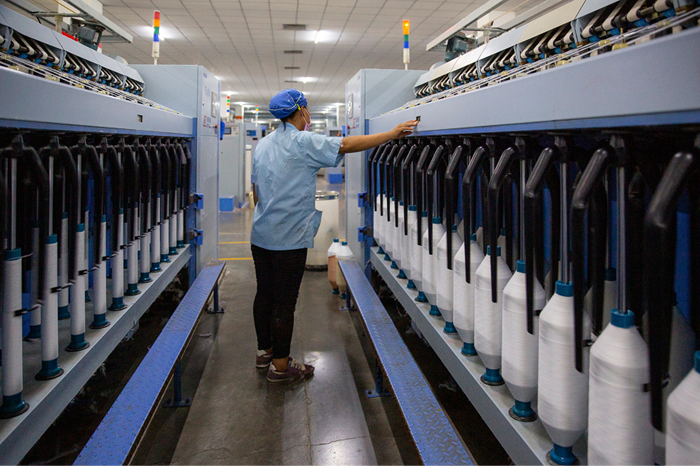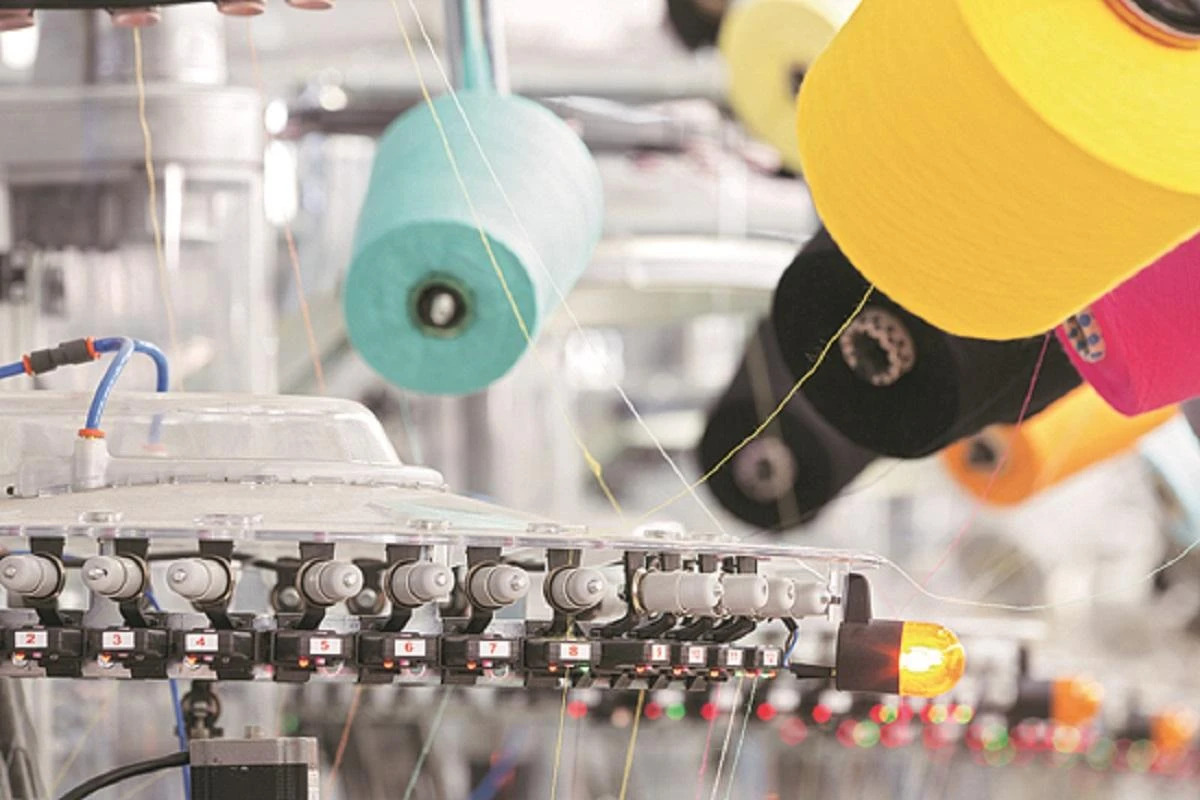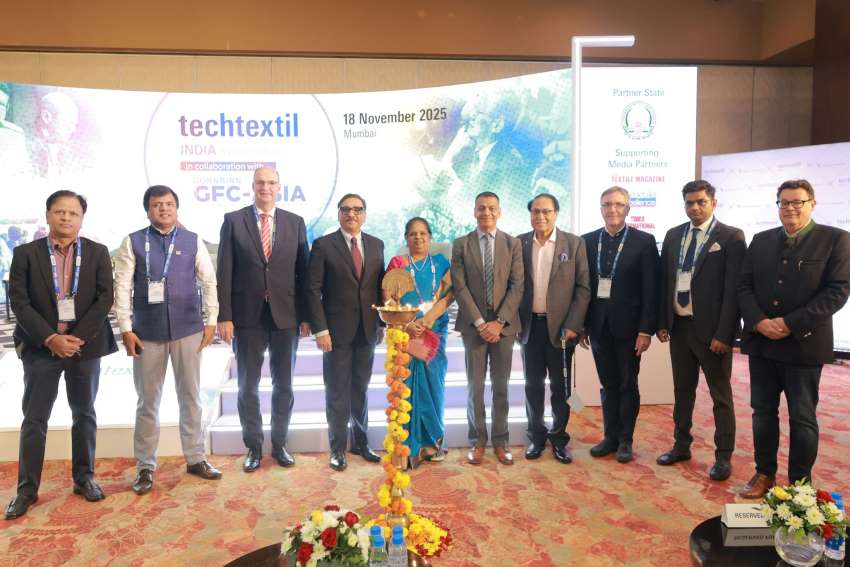"The textile industry, the second-biggest employer in the country after agriculture, has recently received a booster package of Rs 6,000 crores from the Union government. The package aims to help in creating one crore jobs, mostly for women, in the next three years. How is India going to leverage this package to become the global hub of textile? " Read on…
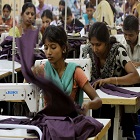
The textile industry, the second-biggest employer in the country after agriculture, has recently received a booster package of Rs 6,000 crores from the Union government. The package aims to help in creating one crore jobs, mostly for women, in the next three years. How is India going to leverage this package to become the global hub of textile?
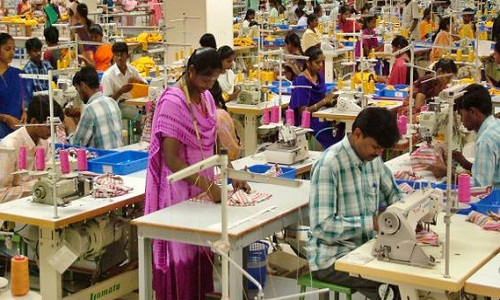
Experts are of the view that while designing the package, Modi tried to replicate the Gujarat model. When he was the chief minister of Gujarat, textile used to be one of the shining stars contributing more than 23 per cent to the state's gross domestic product. It offered boost to cotton growers and textile mills by way of special incentives. Textile parks and financial support for tech upgrades were some of the major incentives taken by the government during his reign. Industry association sources feel that Modi understands the textile industry well. He has worked out the policy is such a way that it makes an inclusive impact by creating jobs, increasing production and pushing up demand and exports.
The bigger question is: will the government be able to create employment opportunities? By 2025, India is estimated to have the largest number of people, over 832 million, in the working age group (18-59) compared to 658 million-plus today. The garments sector comes as the silver lining for the government and the unemployed population. According to a data from the office of the Textile Commissioner, readymade garments is the biggest employer in the value chain; in 2011, it employed 11.22 million people out of the 45.19 million working in the textile sector. The number of people working in the apparel segment is expected to grow to 12.9 million by 2017.
Thriving industry updates
Faridabad-based Shahi Exports for example, it employs more than 1 lakh employees; 70,000 factory workers, more than 65 per cent. The company owns 43 manufacturing facilities and is one of India's biggest apparel exporters. The owner of Shahi Exports feels that this is just the beginning. The government has realised the true potential of the sector as a job creator. The package will create conditions for mass employment of unskilled, less educated, rural and migrant population.
Like Shahi Exports, other apparel manufacturers also opine that India is at the cusp of a historic opportunity and the government has finally understood what garments can do for the country. All developing countries have been focussing on labour-intensive sectors to move growth ahead. Countries such as China indentified the sector's job-creating potential five decades ago and made manufacturing and exports competitive through incentives and policies. To give you a comparative analysis, Orient Craft, with a turnover of Rs 1,600 crores, employs 32,000 people, while Maruti Suzuki India, with a turnover of Rs 48,000 crore, employs just 19,000.
China offered apparel sector subsidies of as much as 17 per cent. It invited the who's who of labour-intensive segments and offered them cheap land, good infrastructure and other incentives to boost growth. The same phenomenon was replicated by other industries such as shoes, toys and accessories. Chinese Government was clear – the more employment you generate, the more subsidies you get. This proposition worked wonders for capturing global market share and generate jobs. Today, apparel industry exports from China are eight times India's. It also employs eight times more people than India's apparel industry.
Textiles a thriving segment
Consultancy firm Technopak's Textile & Apparel Compendium 2015 says the global textile and apparel trade was worth $773 billion in 2013. It is expected to grow at a CAGR of 5 per cent over the next decade with growth of the apparel trade (6 per cent) expected to outpace that of fabric trade (4 per cent). In 2013, global fabric trade was worth $137 billion while global apparel trade was worth $428 billion. Even though China has the largest share of the global apparel trade at 39 per cent (Bangladesh's share is 6 per cent, India's is 4 per cent and Turkey's is 3 per cent), experts say things may change soon. A recent World Bank report, ‘Stitches to Riches’, highlights that as China develops, it is likely to make more higher-value goods such as electronics and computers or see production of textiles shift to other countries in response to wage differences.
Wages in China are approx. $314 a month, in comparison to $145 in Vietnam, $120 in India and $68 in Bangladesh. It must be noted that wages account for up to 30 per cent cost of a garment. As wages increase and yuan gains momentum, the apparel industry is shifting base from China, creating a potential $280 billion-plus market for other countries.
As per the World Bank estimates, a 10 per cent rise in apparel prices in China will amount to 13-25 per cent rise in South Asian countries' apparel exports. For India, it could result 14.6 per cent rise in exports to the US and 18.95 per cent to the EU. A 10 per cent increase in Chinese apparel prices will augment apparel employment in India by 3.32 per cent for males and by 2.51 per cent for females.
Dealing with the situation
India is in a better position today to leverage on changing market trends. India, China and Turkey are the only three nations that have achieved full vertical integration in the textile value chain - from farm to fashion. Also, global buyers are eying fewer countries and companies for apparel sourcing. However, for that to happen, India will have to work on its weaknesses such as high labour cost/excise duties and lack of bilateral trade agreements, which are making it uncompetitive in a highly price-sensitive market. In 2015, Bangladesh, one of India's biggest competitors, with very little fabric of its own, exported apparel worth $27 billion compared to India's $17 billion, on the back of cheap labour and Free Trade Agreement, (FTA), with the EU. The FTA enables importing countries to pay zero duty on apparel from Bangladesh. In 2012, apparel accounted for 83 per cent of our eastern neighbour's exports.
Like Bangladesh, many countries such as Cambodia, Bahrain, Egypt and Mexico have signed preferential bilateral/multilateral trade agreements with the EU and the US. These means their exports enjoy zero import duty. In contrast, Indian garment exports to the US attract import duties ranging from 10.83 per cent to 29 per cent. The figure for the EU is 9.6 per cent.
That’s one of the reasons for India not gaining from the fall in Chinese textiles exports from $173 billion in 2014 to $162 in 2015. The business has shifted to Bangladesh, Vietnam, Cambodia and Indonesia. Going ahead, India will face a big threat from Vietnam, which has a good labour force, good quality of needle, etc. In anticipation of the Trans-Pacific Partnership, signed in February 2016, which will give it duty-free access to the US, millions of dollars have already started flooding into Vietnam.
India sustains its dominance in garments requiring high degree of creativity, but Bangladesh has an edge in mass-production at unbeatable prices. Labour in Bangladesh is 40 per cent cheaper than India, thereby offering 10 per cent price advantage. If one adds the 9.6 per cent duty, its Bangladesh stands to gain by 20 per cent. The Indian government is trying to eradicate 9.6 per cent duty obstacle. The ministry is attempting to sign FTA and a special agreement with the UK after Brexit. Bilaterals with Turkey and Russia are also under pipeline.



